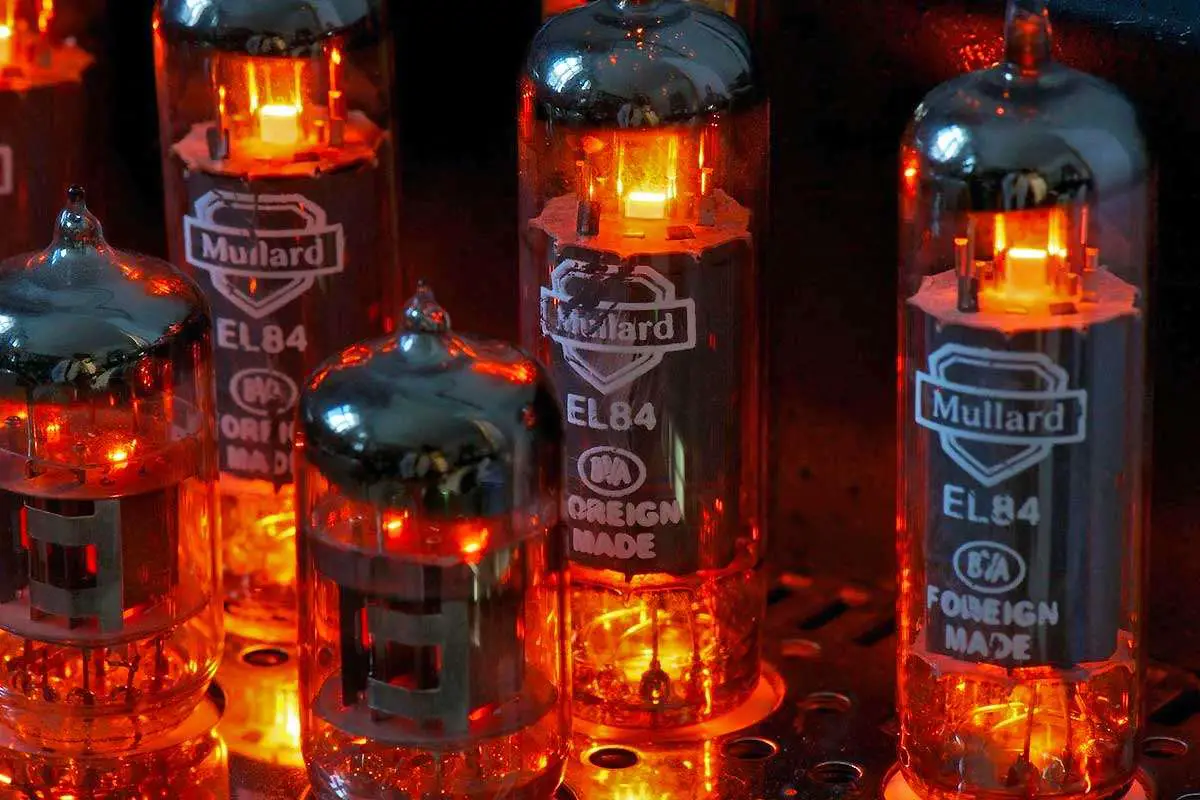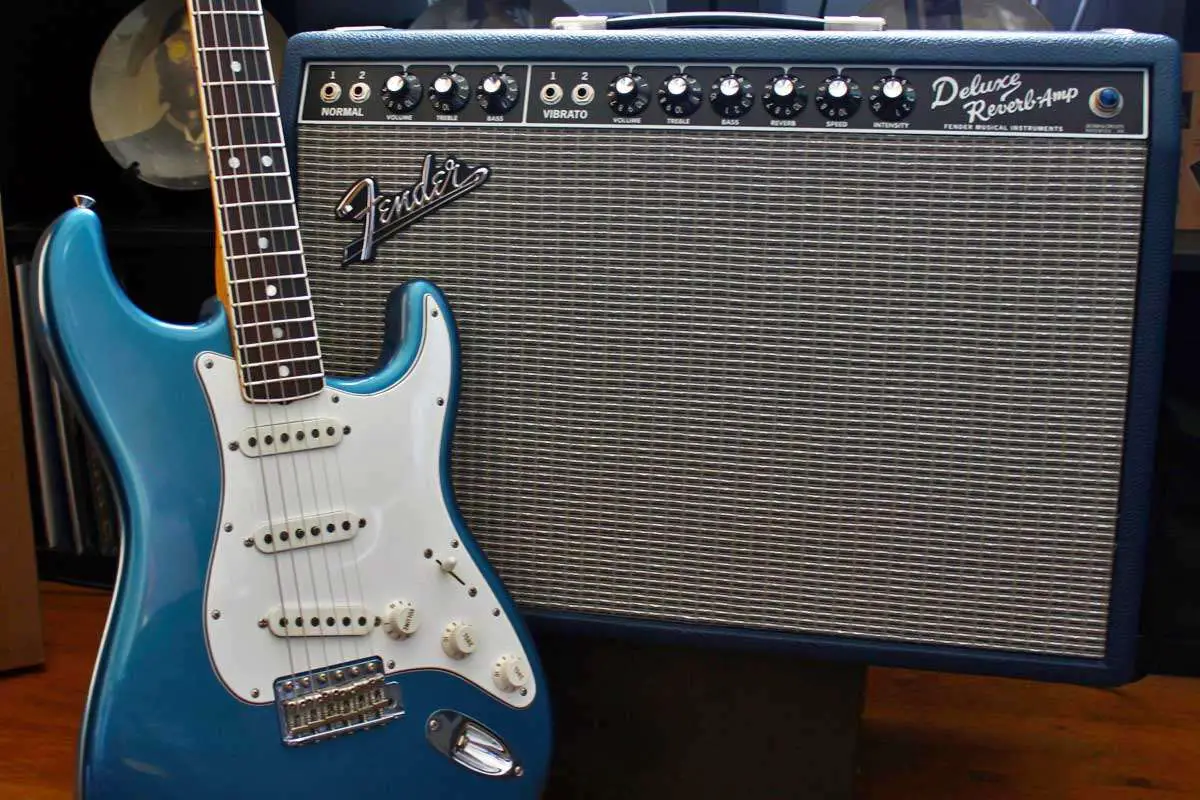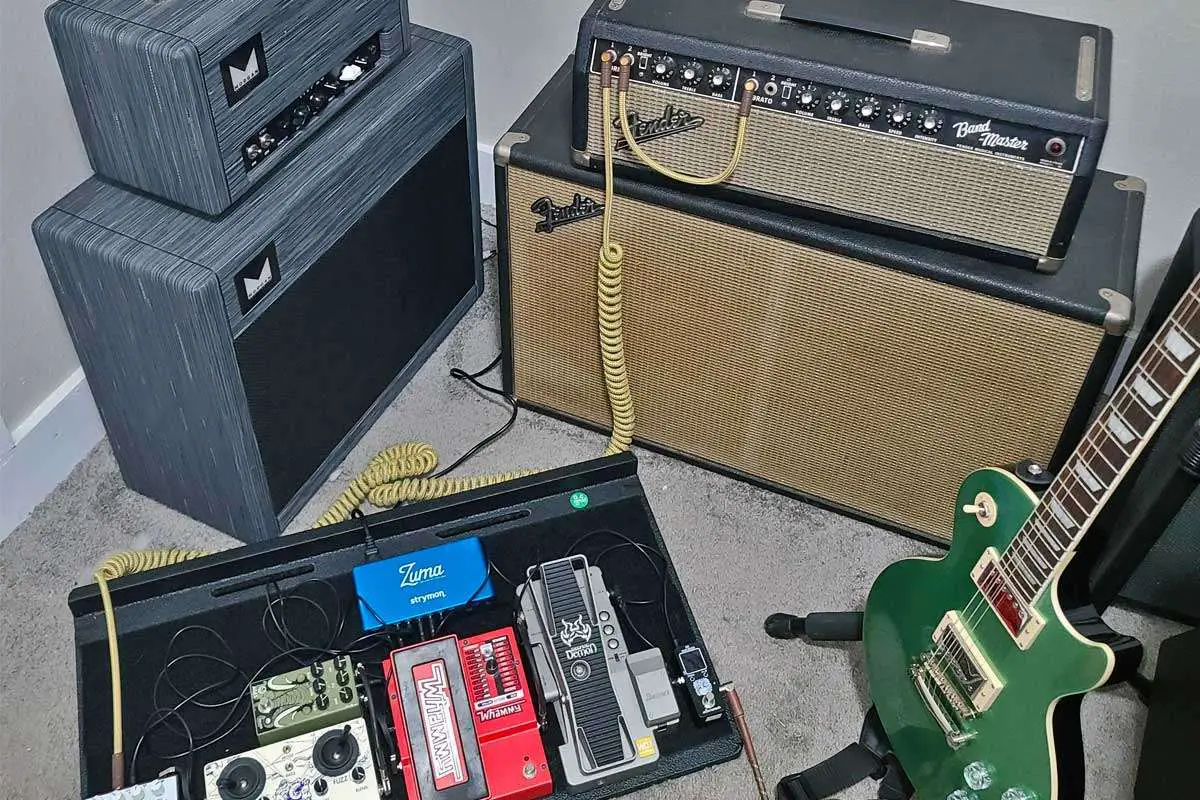When exploring the world of guitar amplifiers, you’ll encounter a variety of tubes, each contributing its unique character to your sound. One pair often debated are the 6V6 vs EL84 power tubes, which stand out as popular choices for musicians seeking different tonal qualities. The 6V6 tube, a staple in small American combo amps, is renowned for its warm, round, and clean tones that have shaped the sounds of countless records.
On the other hand, the EL84 tube is more closely associated with the British invasion, offering a chimey, more aggressive, and midrange-focused sound that cuts through the mix. This contrast in audio characteristics is a fundamental aspect of the 6V6 vs EL84 conversation, influencing your decision based on the style and requirements of your playing. Understanding the technical and sonic differences between these tubes will help you tailor your guitar’s voice to your personal taste and genre.

Understanding Amp Tubes and Their Characteristics
When you explore the world of tube amps, it’s vital to understand the nuances of power tubes like the 6V6 and EL84, as well as others such as the 6L6 and EL34. Their sound profiles, power handling, and technical aspects will greatly influence your guitar amp’s tone and performance.
Tube Types and Their Sound Profiles
The 6V6 is renowned for its warm, rounded tones with rich mids, making it a staple in American amp design. It’s ideal for achieving a vintage vibe. The EL84, on the other hand, is famous for its distinct chime and ability to provide pronounced mids and articulate overdrive at lower power levels. For higher gain applications, the 6L6 offers a robust bottom end and an overall powerful sound, while the EL34 is the go-to for British amps, known for their midrange emphasis and smooth distortion.
Power Handling and Output
Guitar amps typically outline their power in terms of wattage, which determines headroom; the capacity your amp has before breaking up into distortion. Power tubes, like the 6V6, typically have lower wattage, contributing to the warm overdrive at lower volumes. In contrast, EL84 tubes can often be found in amps with modest headroom that excel in delivering their signature tone without requiring high volumes.
Technical Aspects of Tubes
When discussing bias, you should note that tubes like the 12AX7, used in preamp sections, can be cathode biased, leading to a sweeter sound at lower volumes. Power tubes, such as the EL84 or 6V6, can be cathode or fixed biased, affecting the available headroom and characteristics of distortion. The socket and heater current requirements are different among tubes; pentodes like EL84 have five active elements inside, while tetrodes like the 6V6 have four, directly impacting the amp’s tone. Triodes, meanwhile, deliver a smoother and more harmonically rich sound.
Related: Power Amp vs Preamps
Popular Amp Models and Their Signature Tubes
When you’re exploring the world of guitar amplification, the tubes within the amps are as critical as the circuitry itself. The 6V6 and EL84 tubes have distinct voices and contribute significantly to the signature sound of various classic amps.

Famous Fender and Marshall Amps
Fender Amps: Renowned for their sparkling clean sounds and rich reverb, Fender amps often utilize 6V6 tubes. Take the Fender Champ, for instance, which excels in delivering warm clean tones that gently break into smooth overdrive when pushed. On the other hand, the beloved Fender Deluxe Reverb, a staple in blues and jazz, provides a bit more headroom and a deeper reverb thanks to this tube.
Marshall Amps: If you’re delving into hard rock or blues rock, the Marshall JTM45, a classic in its own right, originally came equipped with 6V6 tubes but was later fitted with KT66 for a more British sound. In contrast, the Marshall JCM 800 models frequently feature EL34 tubes, delivering a definitive growl and bite that cut through the mix for classic rock.
The Vox Sound and Beyond
Vox Amps: The EL84 tubes are synonymous with the Vox AC30 and AC15, providing a chimey high-end and an assertive midrange that has become a standard for British rock tones. The AC30 can offer brilliant clean sounds but is also capable of a pleasing compression and overdrive when turned up.
Hiwatt and Orange: Other British manufacturers, such as Hiwatt, are known for their use of EL34 Tubes for a punchy and clean platform that also handles pedals well. Stepping into higher gain territory, the Orange Rockerverb series with EL34 tubes is revered by modern hard rock and metal players for its durable construction and versatile gain stages suitable for aggressive playing styles.
Practical Considerations for Guitarists
When selecting between 6V6 and EL84 tubes for your guitar amp, it’s crucial to consider how they match your playing style, their maintenance needs, and the opportunities for tonal customization.

Matching Tubes to Guitar Style
The choice of power amp tubes significantly affects your guitar’s tone and dynamic response. For jazz and blues styles, a 6V6 tube is renowned for its warm mids and smooth clean sounds. In contrast, the EL84 is known for its aggressive mid-range punch, suitable for blues rock and classic rock genres. If you’re a guitarist seeking sparkling highs or overdrive with a softer top-end, the 6V6 can be the ideal choice. For those who prefer a crisp and assertive high-end, the EL84 tubes offer that brittle crunch perfect for hard rock styles.
Maintenance and Safety Tips
Regular maintenance of your amp and tubes will extend their life and ensure consistent tone quality. It’s essential to bias your tubes correctly to avoid damage and maintain optimal performance. Always attend to the warm-up and cool-down periods of your tubes to prevent unnecessary stress. Following safety protocols is critical when handling biasing and other electrical maintenance—discharge capacitors and follow manufacturer instructions to avoid the risk of injury.
Tone Shaping and Amplifier Customization
The EQ curve and frequency response of your amp can be tailored by choosing specific preamp and power tubes. The 6V6 tubes lend a warmer and softer sonic character, which pairs well with amplifiers designed for rich overtones and smooth distortion. For amplifiers that benefit from enhanced gain and dynamic overdrive, EL84 tubes contribute a tighter frequency response, allowing for precise tone shaping. Customizing your amp with the right combination of preamp tubes, output tubes, and power section modifications can lead to a personalized sound that fits your stylistic tendencies.
Valve Amplifier Tube Comparisons
Want to learn more about guitar amp tubes? Explore the nuanced distinctions between preamp and power tubes, including popular matchups like ECC83 vs 12AX7 and EL34 vs KT88, as we unravel the sonic differences that shape your guitar’s unique voice.
| Tube Types | Application |
|---|---|
| ECC83 vs 12AX7 | Preamp Tubes |
| 12AU7 vs 12AX7 | Preamp Tubes |
| 6L6 vs EL34 | Power Tubes |
| 6L6 vs KT66 | Power Tubes |
| 6L6 vs 6V6 | Power Tubes |
| 5881 vs 6L6 | Power Tubes |
| EL34 vs EL84 | Power Tubes |
| EL34 vs KT88 | Power Tubes |
| EL34 vs KT77 | Power Tubes |
| EL34 vs KT66 | Power Tubes |
| 6V6 vs EL84 | Power Tubes |
